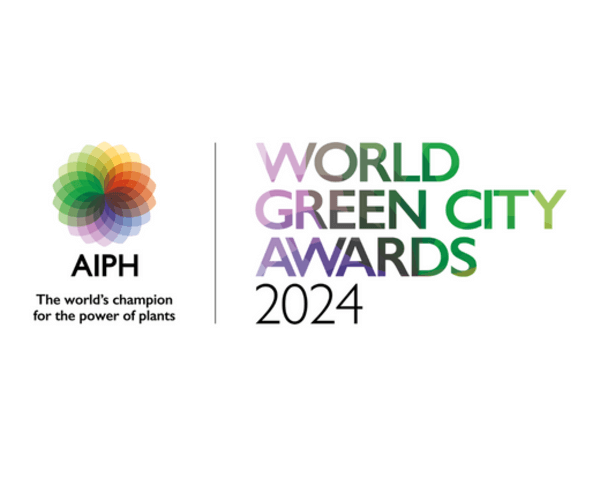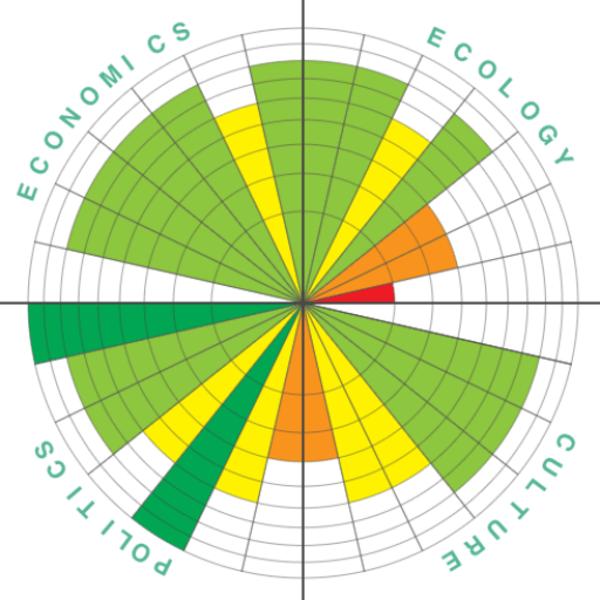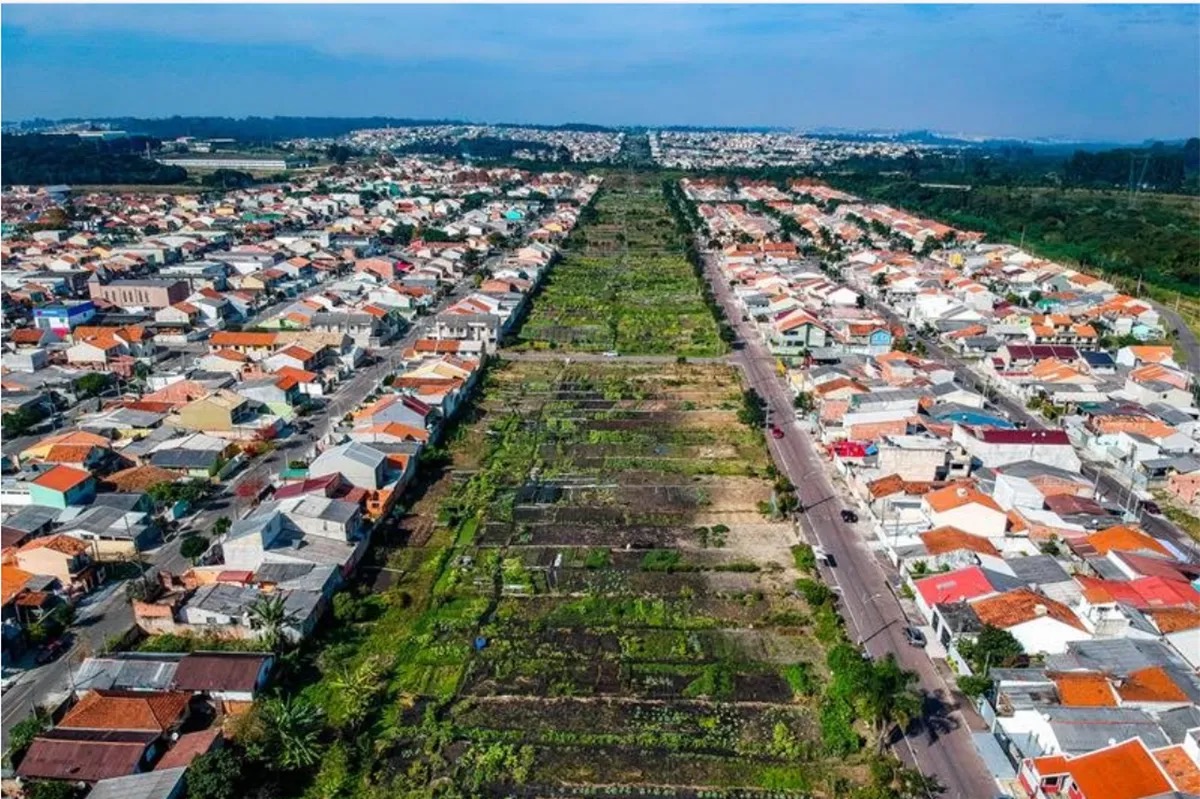 - © Municipal Secretariat of Food and Nutritional Safety - Social Communication Department
- © Municipal Secretariat of Food and Nutritional Safety - Social Communication Department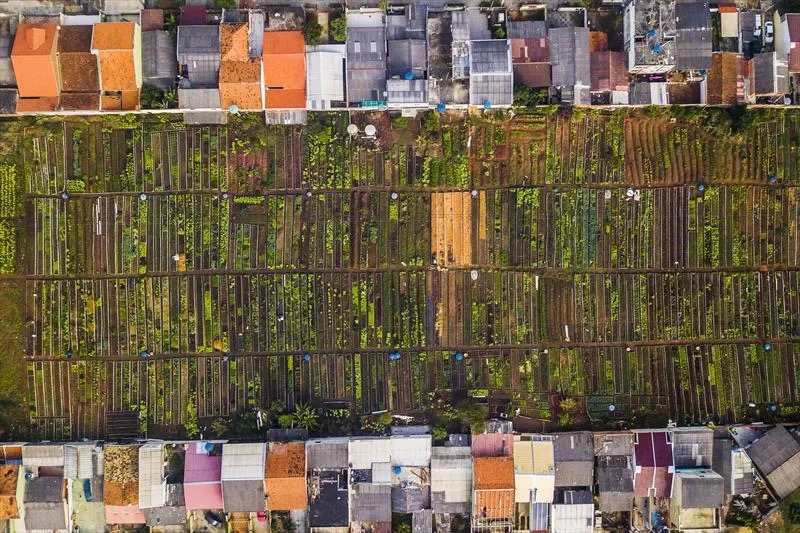 - © Municipal Secretariat of Food and Nutritional Safety - Social Communication Department
- © Municipal Secretariat of Food and Nutritional Safety - Social Communication Department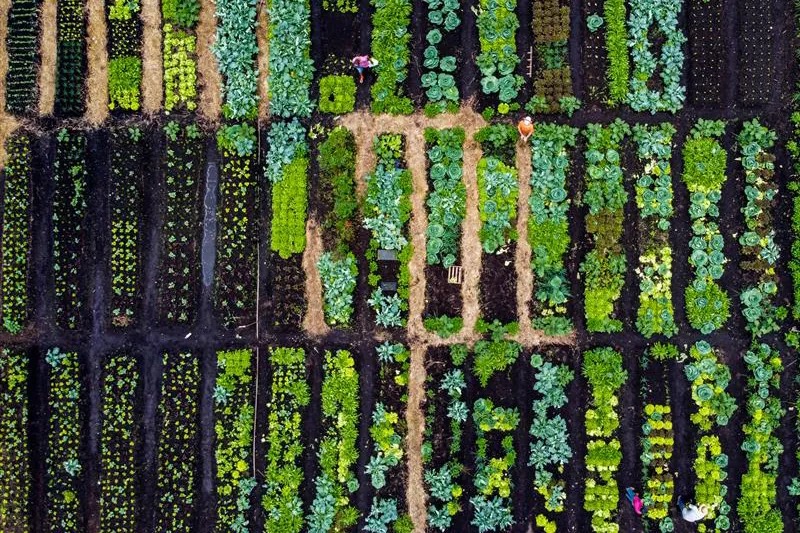 - © Municipal Secretariat of Food and Nutritional Safety - Social Communication Department
- © Municipal Secretariat of Food and Nutritional Safety - Social Communication Department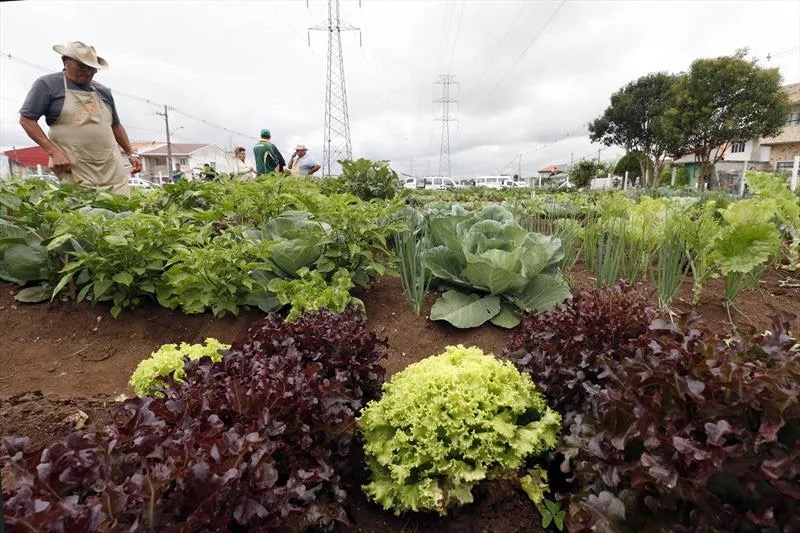 - © Municipal Secretariat of Food and Nutritional Safety - Social Communication Department
- © Municipal Secretariat of Food and Nutritional Safety - Social Communication Department
City
Curitiba
Main actors
City Government, Private Sector, Community / Citizen Group
Project area
Whole City/Administrative Region
Duration
Ongoing since 2020
Food insecurity and rapid urbanisation are challenges faced by metropolises worldwide, especially in peripheral areas. In cities like Curitiba, where the human development index is considered high compared to other Brazilian municipalities, the coexistence of malnutrition and obesity rates in the population reflects the urgency of actions that can structurally improve food quality and the socio-economic situation of society. In this context, the Urban Agriculture Programme, which involves on-site implementation of vegetable gardens and the centralisation of policies at the Urban Farm, encourages and empowers people to produce their own food, especially fruits and vegetables, without the use of pesticides, thereby improving food quality and overall health. It also demonstrates the potential of green jobs within cities, as well as the possibility of shortening the consumption chain and the resulting environmental benefits, such as reduced greenhouse gas emissions and environmental regeneration.
This is an abbreviated version of a case study originally published by AIPH with information provided by the city of Chengdu in their entry for the AIPH World Green City Awards:
Link to full case study.
AIPH World Green City Awards
This project was awarded the 'AIPH World Green City Awards' in the following category: Finalist.
Curitiba’s Urban Agriculture Programme traces its origins back to the mid-1990s, making it not a recent initiative but an ongoing, evolving endeavour. Its implementation has been gradual and consistent, garnering support from different municipal administrations and seamlessly integrating into the city’s sustainability plan.
This programme encourages the utilisation of vacant and unproductive urban areas, transforming them into productive vegetable gardens. In these spaces, food is cultivated, organic waste is recycled, and, most importantly, people come together around the theme of food production.
The Curitiba Urban Farm, established in 2020, serves as the central hub for all training in urban agriculture, sustainability and innovation. Its success is evident, with a similar unit set to open in 2024, underscoring the community’s endorsement of this initiative.
The implementation of urban gardens is carried out in three different formats: community gardens, school gardens and institutional gardens, where the potential of plants and associated ecosystems is harnessed to improve food quality, social interaction and the promotion of agroecological agriculture. Specifically, in community gardens where production is on a larger scale, there is an impact on household income due to reduced food costs and the possibility of selling surplus production. The areas where community gardens are established undergo a process of regeneration, reducing urban environmental degradation. In school and institutional gardens, as well as in the Urban Farm, the potential of plants is utilised for learning about the food cycle, serving as a tool for nutritional and environmental education.
The Urban Agriculture Programme is part of an integrated food agenda administered by the Municipal Secretariat for Food and Nutritional Security, responsible for coordinating with other public agencies and civil society to ensure intersectoral collaboration and programme advancement. The planning of actions is conducted in collaboration with the population to develop the Municipal Food and Nutritional Security Plan, which has a quadrennial duration. In the legislative branch, the urban agriculture agenda is represented by the Parliamentary Front for Food and Nutritional Security, which monitors, collaborates and oversees projects and programmes aimed at promoting and supporting food and nutritional security, including the Curitiba Food Supply Fund, used to financially develop or support the Urban Agriculture Programme.
Curitiba’s Urban Farm hosts two startup companies within its physical space because of a partnership between the Municipal Secretariat for Food and Nutritional Security (SMSAN) and the Curitiba Agency for Development and Innovation. This collaboration is centred on developing innovative projects and solutions in the fields of agricultural production, food security, organic waste disposal and the optimisation of renewable resources. In this context, the Urban Farm works as a laboratory for the subsequent transfer of these experiences to communities.
The objective of the projects is to enhance food production, promote responsible water usage, reduce costs, and raise awareness within the community regarding food waste and mindful consumption. The startup “Coletivo Ambiente Livre” which is responsible for the “Compostroca Project,” deals with reverse logistics of organic waste generated by community families, converting these waste materials into fertiliser for community vegetable gardens. The startup “IrriGate” develops automation systems for irrigation in greenhouses.
The partnership between the Municipal Secretariat for Food and Nutritional Security and the Municipal Education Secretariat drives educational initiatives through the “Linhas do Conhecimento” (Lines of Knowledge) Programme, focusing on socio-environmental sustainability. The goal is to raise awareness among students and teachers about the importance of healthy eating and cultivating food in urban gardens.
The urban agriculture Programme of Curitiba was established by law, therefore it is not susceptible to changes in administration.
The physical structure of the Urban Farm is already consolidated and does not depend on significant additional financial contributions, only maintenance of the spaces. The courses offered at the Urban Farm are conducted by administration employees with stable careers, ensuring continuity. The Urban Farm was established by law, having a creation decree, which guarantees its continuity and survival through changes in government.
The financial capital for the promotion of the Urban Agriculture Programme is guaranteed by a public fund (FAAC) established by law in 1990 (https://shorturl.at/eqM37). This fund is currently undergoing restructuring, with its budget set to be doubled.
Proof of this will be the construction of a new urban farm in 2023-2024, with both project and budget approved.
Resources for the maintenance of existing vegetable gardens and the creation of new gardens are secured by the FAAC fund. Inputs such as fertile soil, organic fertiliser, construction materials for the gardens, seedlings, seeds, containers for water storage, composting containers, stingless bee hives and fruit tree seedlings are guaranteed. For example, approximately 240 tons of fertile soil, 61 tons of fertiliser, 530 construction blocks for beds and 436,100 vegetable seedlings are distributed annually.
Multi-Stakeholder Support
The Urban Agriculture Programme of Curitiba not only encourages partnerships but also relies on them. The largest urban gardens in Curitiba are located under the high-voltage power lines that cross the city. By law, no construction of any kind or any commercial activity is allowed in these locations. It was only through a partnership with the energy distribution company that it became possible to use these spaces.
An inherent feature of this initiative is community participation. The gardens are only established if the community is involved. Currently, 325 families benefit from and maintain these spaces, making community involvement the foundation of Curitiba’s Urban Agriculture Programme.
On the other hand, at the Urban Farm, the qualified physical space attracts many partners from different sectors of society, such as private companies, public enterprises and NGOs. These partners provide valuable contributions of human capital to spread the key concepts in the Urban Farm initiative and the Urban Agriculture Programme.
Monitoring is essential because there is an investment of public resources, and accountability is necessary. The growth and expansion rate of the Urban Agriculture Programme, on the other hand, highlights both its strengths and weaknesses in the strategy. For instance, the number of vegetable gardens established in schools in 2023 compared to 2022 was very low due to: a) school gardens being small with a lower impact on the “implemented area” variable; b) schools being far apart, resulting in a significant loss of time for their maintenance; c) the small size of the team involved in implementation. Based on these facts, the strategy was changed, opting for much less frequent monitoring of school vegetable gardens, with fewer visits and reduced training hours. Instead, the focus shifted to training teachers at the Urban Farm to empower them as knowledge multipliers. In this new format, it becomes possible to serve a much larger number of schools.
Measuring progress and establishing clear and objective variables are key elements in the Programme’s expansion. Currently, the strategy is oriented towards partnerships with companies interested in advancing their ESG agenda. By presenting a clear strategy based on public policies and measurable data, we aim to attract companies and align them to participate in the Urban Agriculture Programme.
Measuring Impact
The numbers of the Urban Agriculture Programme are as follows:
- Total area of urban gardens: 177,000 square metres (or 17 hectares or 44 acres).
- Total number of urban gardens: 147.
- Community gardens: 47.
- Institutional gardens: 36.
- School gardens: 43.
- Estimated monthly vegetable production in community gardens: 160 tons.
- Estimated number of people benefiting from community gardens: 37,000.
- Urban Farm area: 4,435 square metres.
- Average annual number of children visiting the Urban Farm: 844.
- Average monthly number of people attending courses at the Urban Farm: 140.
- Estimated annual vegetable production at the Urban Farm: 1 ton.
- Current number of beehives (stingless bees): 89.
- Estimated number of beehives (stingless bees) to be installed in municipal schools in 2024: over 360.
The measurement of impacts is primarily quantitative, as demonstrated above, but there is also feedback at the individual level that we can observe in our day-to-day fieldwork. This feedback is more challenging to quantify, but for those working with people, the acceptance and difference that an urban vegetable garden makes in people’s lives is very clear. However, the measurement of more qualitative aspects is the next step in this initiative.
When envisioning the future of these spaces if they were not occupied by urban agriculture, they could certainly become dumping grounds or areas of disorderly occupation with illegal constructions and without basic municipal services such as water supply and sewage collection. This scenario would lead to serious health, environmental, and social problems that such areas face, including the spread of communicable diseases and soil pollution, with a significant negative impact on the community’s quality of life.
Climate change poses a significant threat to food production worldwide. The occurrence of extreme weather events, such as droughts, floods and hurricanes, can result in substantial disruptions to the food supply chain. These disruptions, in turn, can lead to widespread food shortages and price spikes, affecting vulnerable populations the hardest.
Moreover, access to food, even when it is available in abundance and can be transported across regions, can be severely constrained in countries with substantial income disparities, such as Brazil. Socioeconomic inequalities often mean that many individuals and communities struggle to afford nutritious food, leading to food insecurity and malnutrition issues.
Lessons learned
It is clear, that merely increasing the production of food is not sufficient to address the complex issues of food security and equitable access. To ensure that all citizens have access to healthy and affordable food, it is crucial to promote decentralised food production systems within urban areas. These systems, characterised by short supply chains, not only reduce the environmental impact of food transportation but also create opportunities for local employment and economic development.
By encouraging urban agriculture, supporting community gardens and facilitating access to fresh produce within cities, we can help mitigate the impact of climate change on food security while addressing income inequality and fostering resilient and sustainable food systems. This approach represents a practical and viable solution to the interconnected challenges of climate change, food access and social equity.
Transferability
The nearly weekly visits by members of committees from other institutions, both Brazilian and foreign, demonstrate the success of the initiative and how it inspires others to replicate it.
Inspired by the Honey Gardens of the Curitiba City Hall, the State Government created the “Poliniza Paraná” Programme (Pollinated Paraná), installing hives of native stingless bees in cities across Paraná state. The project’s goal is to reintroduce bees (some species are on the brink of extinction) into conservation units, urban parks, squares and gardens, contributing to the preservation of native species in Paraná and promoting biodiversity conservation through pollination – a process that ensures higher quality and productivity of fruits and grains. The creators believe that the project can also encourage the emergence of new private meliponaries (commercial production of honey) .
SANEPAR – the Paraná Sanitation Company – has established spaces called “Water and Honey Gardens,” inspired by the Honey Gardens of the Curitiba City Hall, thus expanding efforts to preserve native bees in the Metropolitan Region of Curitiba, by installing stingless bee hives in municipal schools and the company’s headquarters.
The DNA of the Urban Farm is knowledge transmission; therefore, education is an integral part of its underlying concept. The success of this initiative has inspired the construction of a new Urban Farm, with full support from the current government and society.
Inspiring Other Cities
Curitiba is a signatory to international agreements focused on sustainability initiatives, such as the Milan Urban Food Policy Pact. In 2022, the Urban Farm of Curitiba received an Honourable Mention at the 8th Global Forum of the Milan Pact for Urban Food Policy, showcasing the city’s commitment to sustainable urban agriculture.
More recently, in 2023, the municipality joined the Declaration of Circular Cities in Latin America and the Caribbean, an initiative by ICLEI South America. ICLEI – Local Governments for Sustainability – is a global network comprising over 1,750 local and regional governments, of which Curitiba has been a member since 1992. In 2021, Curitiba became a mentor to the Urban Laboratory for Integrated Municipal Food Policies (LUPPA), a collaborative platform for the development of integrated municipal food policies involving a community of 48 Brazilian cities.
Participation in these networks has brought visibility to the Urban Gardens, Urban Farm and Honey Gardens projects, establishing Curitiba as a reference in Urban Agriculture due to its well-structured, integrated and measurable programme. As a result, the city has been receiving technical visits from national and international cities seeking to replicate these actions locally. Notable visits include the Consul General of the United States, a Japanese mission from the Japan International Cooperation Agency (JICA), the Spanish Consulate, representatives from iCities of the SMART CITY Expo Curitiba, auditors from the Intelligent Community Forum (ICF), among others.
On Map
The Map will be displayed after accepting cookie policy
